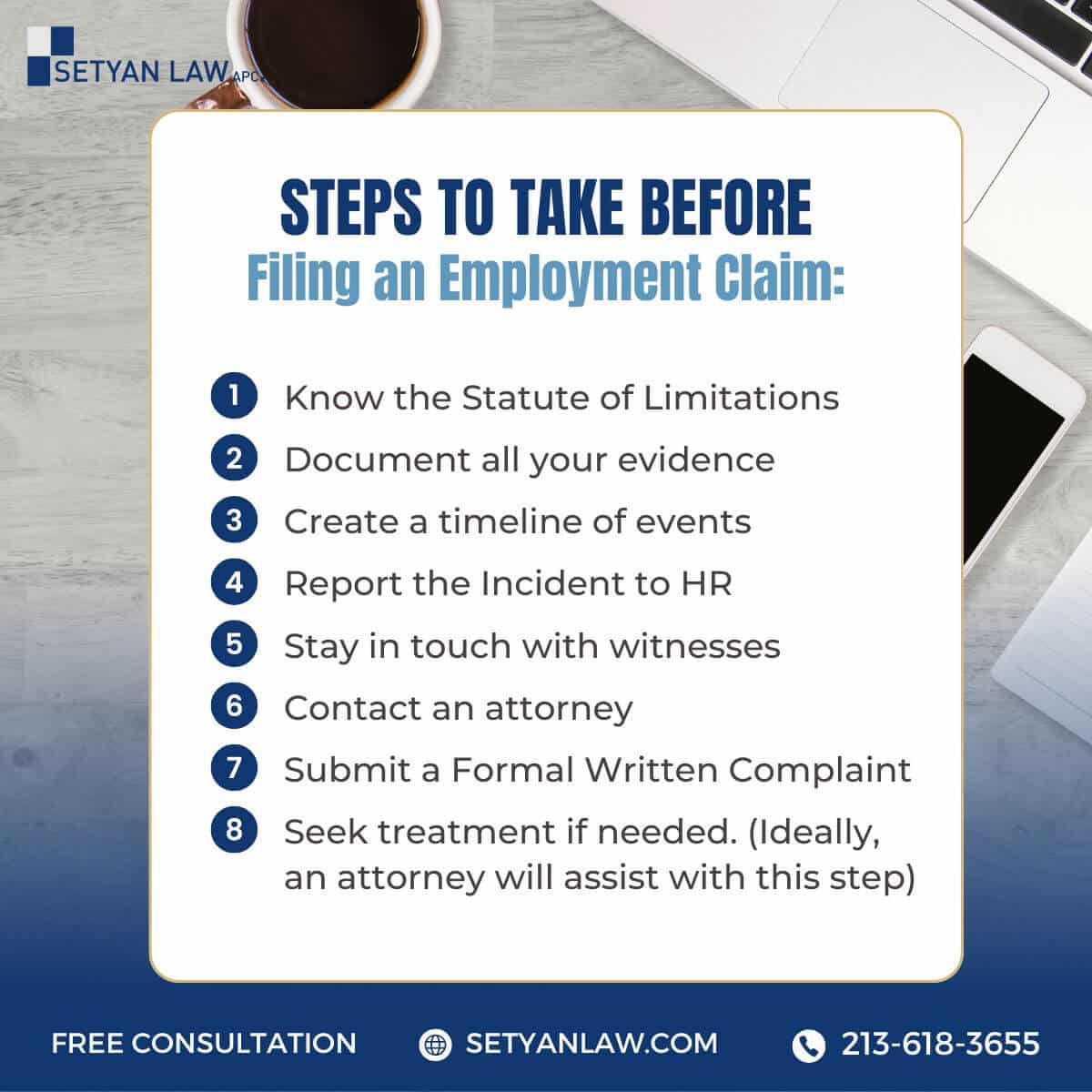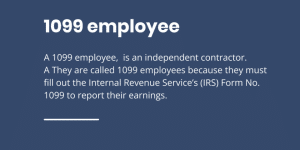Updated October 22, 2025
Save Everything Possible
Discrimination in the workplace continues to be a pervasive issue, with individuals facing bias based on their age, race, gender, disability, and other protected characteristics. When victims of workplace discrimination decide to take legal action, it is crucial to gather and present compelling evidence to support their claims. Evidence plays a pivotal role in proving discrimination and ensuring a successful outcome in a lawsuit. This article explores the significance of collecting evidence in a workplace discrimination lawsuit and provides insights into the types of evidence and the burden of proof.
Report It To Supervisor
Reporting workplace discrimination to your supervisor is not only essential for personal well-being but can also be a critical step if you’re considering pursuing legal action. When you document and report instances of discrimination, you create a crucial paper trail that serves as evidence in a potential lawsuit. Your supervisor’s awareness of the situation is vital, as it places the responsibility on the company to address and rectify the issue.
By reporting discrimination, you demonstrate that you’ve taken reasonable steps within the company’s internal processes to resolve the problem, which can be legally significant. It may also help establish that the company was aware of the discriminatory behavior and failed to take appropriate action. This documentation can be instrumental in building a solid case should you decide to pursue legal remedies.
Types of Evidence in Workplace Discrimination Cases
In workplace discrimination cases, two types of evidence are commonly considered: direct evidence and circumstantial evidence. Direct evidence is explicit and directly establishes discriminatory behavior. For example, an email from a manager explicitly stating that employees over a certain age will no longer be considered for promotions would be strong direct evidence of age discrimination.
However, direct evidence is often difficult to obtain in discrimination cases, and plaintiffs often rely on circumstantial evidence. Circumstantial evidence relies on inference and creates a connection between discriminatory motives and negative actions. This type of evidence helps a jury or judge understand the discriminatory intent behind an adverse employment decision. For instance, a plaintiff may present testimony from a witness who overheard discriminatory comments made by a supervisor before the plaintiff was terminated.
Burden Shifting in Workplace Discrimination Lawsuits
In workplace discrimination lawsuits based on circumstantial evidence, the burden of proof follows a specific framework known as burden shifting. The plaintiff must establish a prima facie case of discrimination, which includes demonstrating that:
- The plaintiff belongs to a protected class (based on race, gender, age, disability, etc.).
- The plaintiff was qualified for the job or met the necessary requirements.
- Despite being qualified, the defendant took negative action against the plaintiff (e.g. demotion or termination).
- Similarly situated individuals outside the protected class were treated more favorably.
Once the plaintiff establishes a prima facie case, the burden of proof shifts to the defendant, who must provide a legitimate, non-discriminatory justification for the adverse action. For example, the employer may argue that the plaintiff’s termination was due to poor performance or a violation of company policies.
At this stage, the burden shifts back to the plaintiff to prove that the defendant’s justification is merely a pretext for discrimination. The plaintiff must present evidence to show that the employer’s stated reasons are false or insufficient and that discrimination was the actual motivating factor behind the adverse employment decision.
Collecting Material and Relevant Evidence
To build a strong case in a workplace discrimination lawsuit, it is crucial to collect both material and relevant evidence. Material evidence is evidence that relates directly to the issues raised in the charge or complaint. It supports the allegations of discriminatory conduct and the harm suffered by the plaintiff. Material evidence is essential for establishing a connection between the adverse action and the protected characteristic.
Relevant evidence, on the other hand, is evidence that tends to prove or disprove the issues raised in the charge or complaint. It helps create a comprehensive picture of the discrimination and strengthens the plaintiff’s case. Relevant evidence can include witness testimony, documentary evidence, performance evaluations, emails, company policies, and any other information that supports the allegations of discrimination.
Collecting reliable evidence is equally important. Reliable evidence is dependable and trustworthy, ensuring its credibility in court. This includes ensuring that witnesses are qualified to testify on the matters they present and that documentary evidence is authentic and the best available to prove a particular point. The reliability of evidence enhances the persuasiveness and credibility of the plaintiff’s case.
Gathering Direct Evidence
While direct evidence may be challenging to obtain in discrimination cases, there are strategies to increase the chances of collecting such evidence. One effective method is to prioritize written communication. Encouraging employees to communicate through emails or written memos increases the likelihood of capturing explicit discriminatory statements or policies. For example, an email explicitly stating that certain employees are being denied promotions based on their gender would be strong direct evidence.
Additionally, maintaining a record of discriminatory incidents or actions can be valuable. Encouraging employees to document instances of discriminatory behavior, such as derogatory comments or unfair treatment, can help strengthen the case with direct evidence. These records can serve as powerful evidence of a pattern of discriminatory conduct.
Utilizing Circumstantial Evidence
When direct evidence is unavailable, circumstantial evidence becomes crucial in proving workplace discrimination. Building a strong circumstantial case requires collecting evidence that supports the inference of discriminatory intent. This can include witness testimony, performance evaluations, comparative evidence of treatment, and other relevant documentation.
Witness testimony can play a significant role in establishing circumstantial evidence. Testimony from coworkers or supervisors who have witnessed discriminatory behavior or overheard discriminatory comments can provide valuable insight into the discriminatory motives behind adverse employment actions. These witnesses can provide firsthand accounts of the discriminatory atmosphere within the workplace.
Performance evaluations can also contribute to circumstantial evidence. Discrepancies in performance evaluations between employees of different protected classes can indicate discriminatory treatment. For example, if employees of a certain race consistently receive lower ratings despite comparable performance, it may suggest racial bias.
Comparative evidence is another effective strategy in proving circumstantial discrimination. By comparing the treatment of employees within and outside the protected class, disparities can be highlighted. For instance, if employees of a certain gender are consistently denied promotions while their counterparts of the opposite gender receive preferential treatment, it may indicate gender discrimination.
The Importance of Legal Representation
Navigating workplace discrimination lawsuits can be complex, and having experienced legal representation is crucial. Employment law attorneys specialize in handling discrimination cases and understand the intricacies of collecting and presenting evidence. They can guide plaintiffs through the process, ensuring that all relevant evidence is gathered, analyzed, and presented effectively.
An attorney can help identify the most compelling evidence, craft persuasive arguments, and counter the defendant’s justifications. They have the legal expertise to navigate the burden-shifting framework and present a strong case that proves discrimination.
Conclusion
When facing workplace discrimination, collecting and presenting evidence is paramount to building a strong case. While direct evidence may be challenging to obtain, circumstantial evidence can be equally powerful in proving discriminatory intent. By collecting material, relevant, and reliable evidence, plaintiffs can establish a prima facie case, shift the burden of proof, and ultimately prove discrimination in court. Seeking legal representation from experienced workplace discrimination attorneys can provide the necessary guidance and expertise to ensure a successful outcome in a workplace discrimination lawsuit.
If you feel your rights have been violated at your workplace, don’t hesitate to talk to a employment attorney about your rights. Call (213)-618-3655 for a free consultation.






